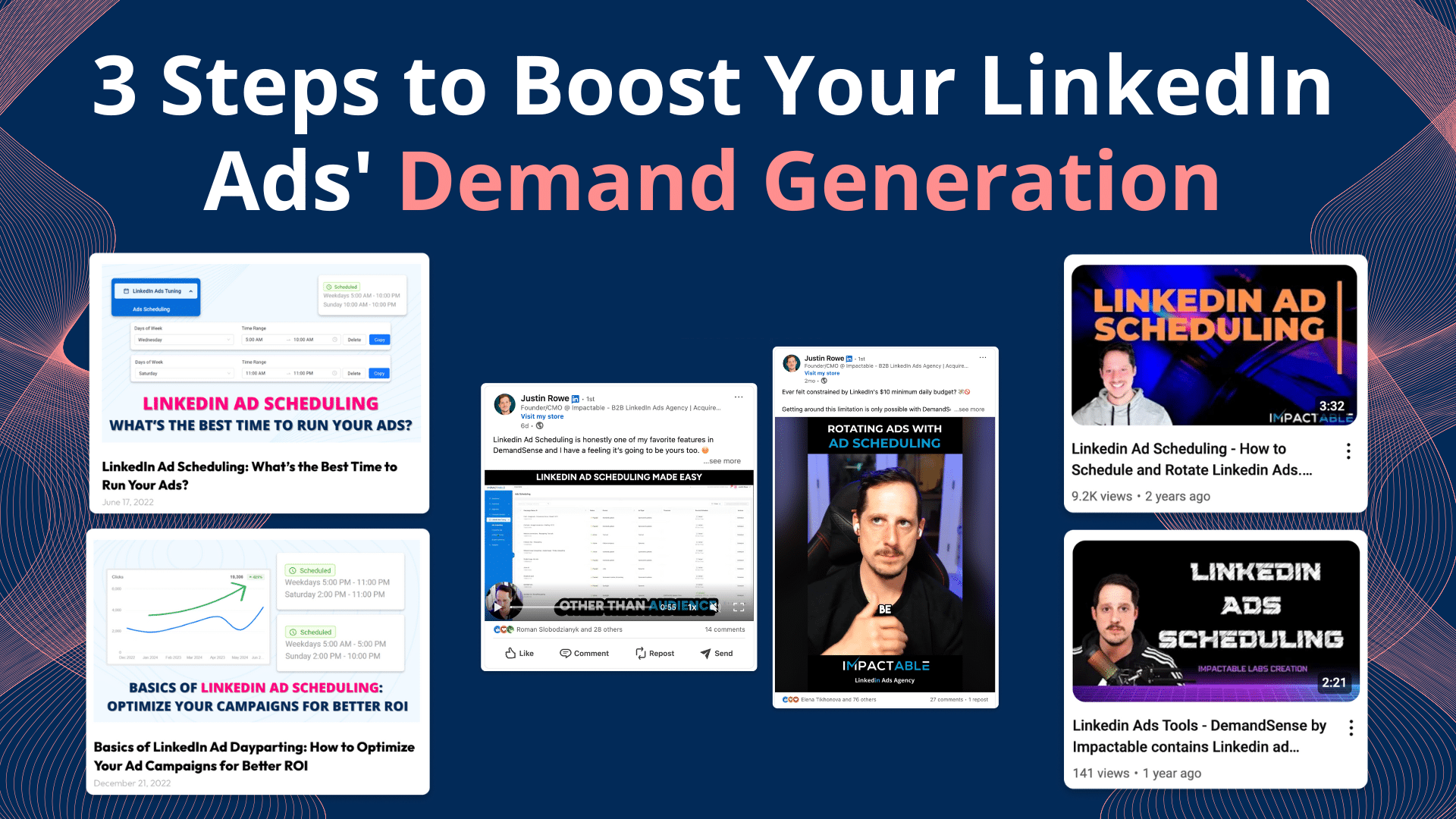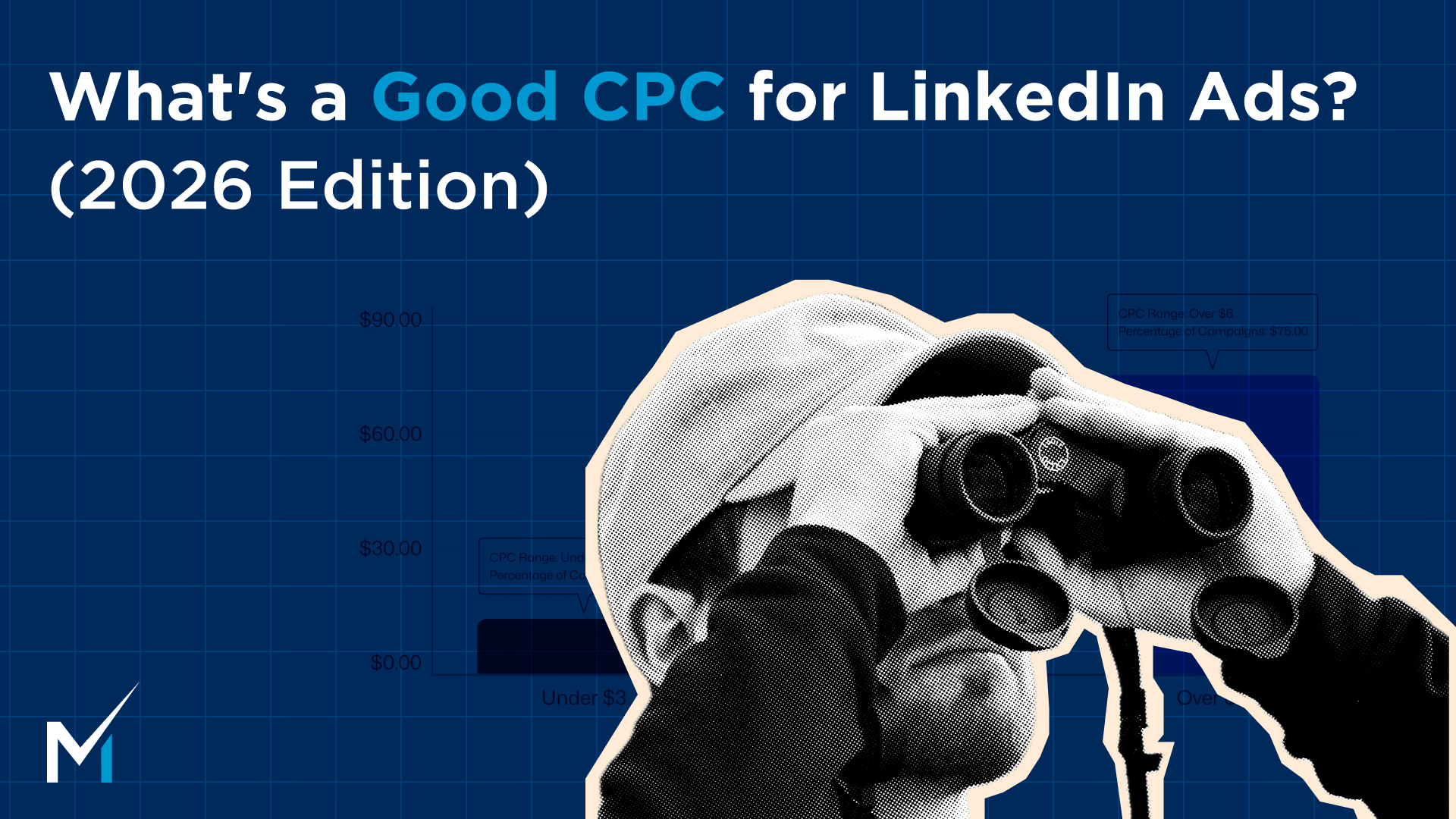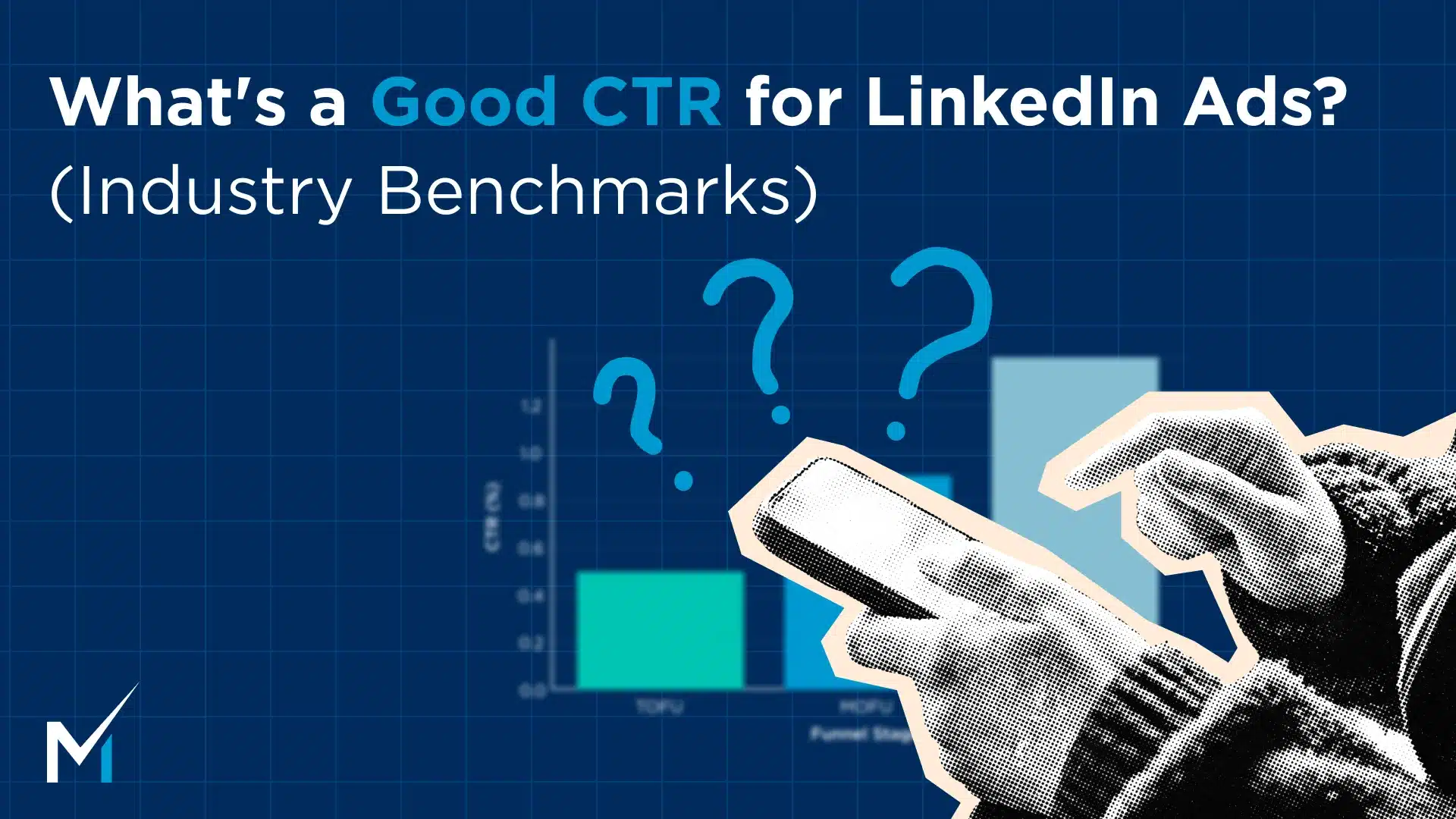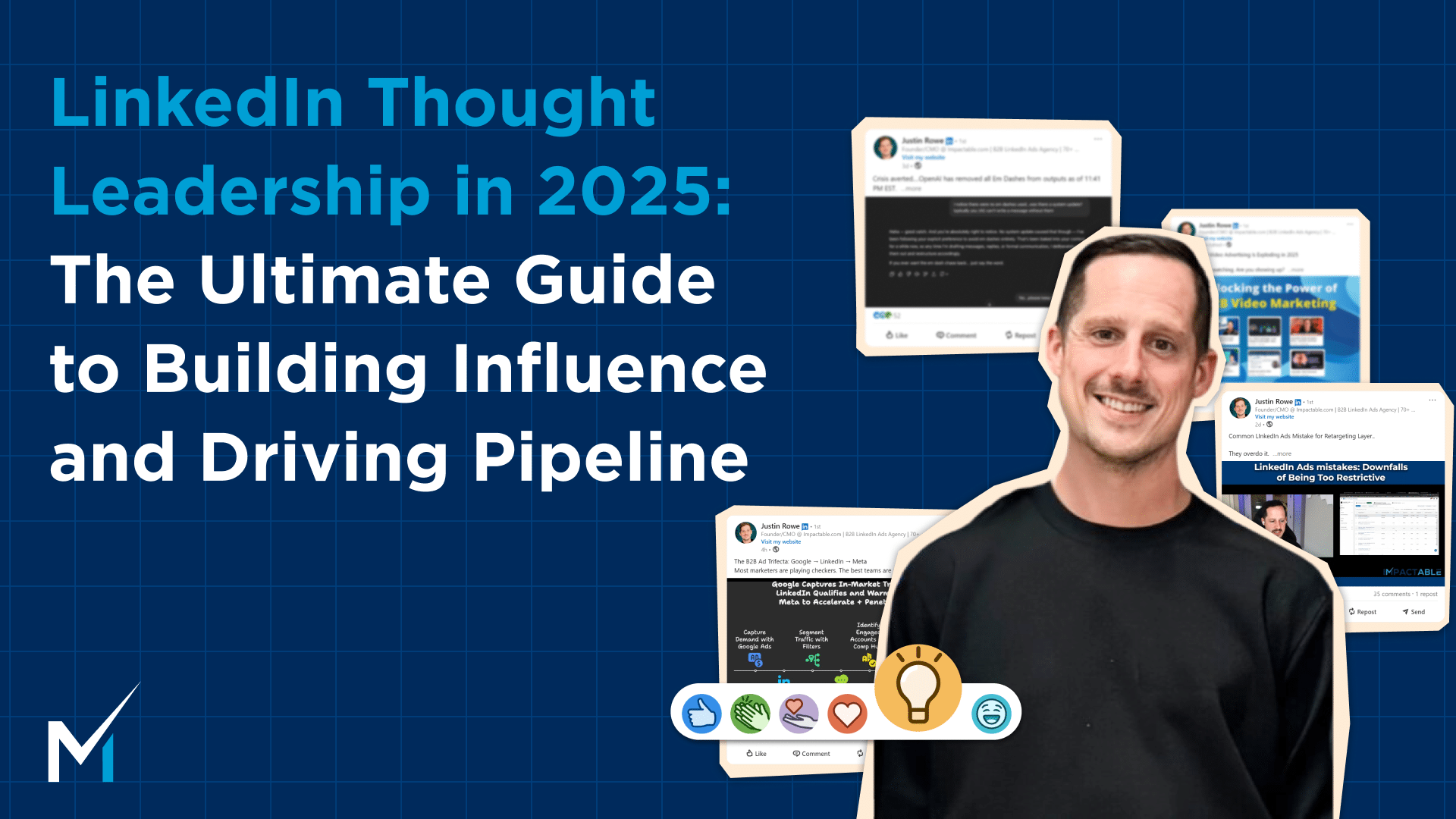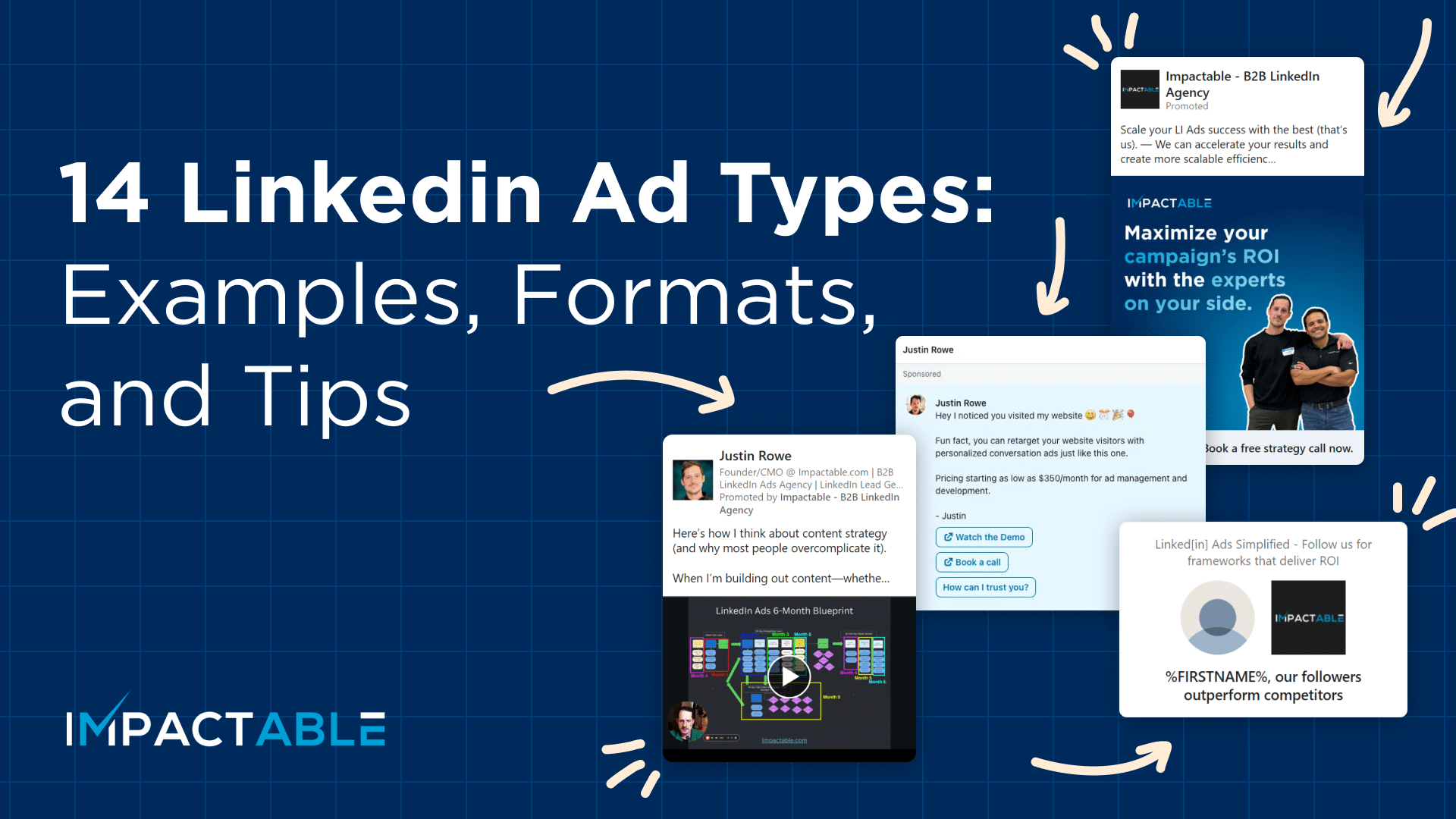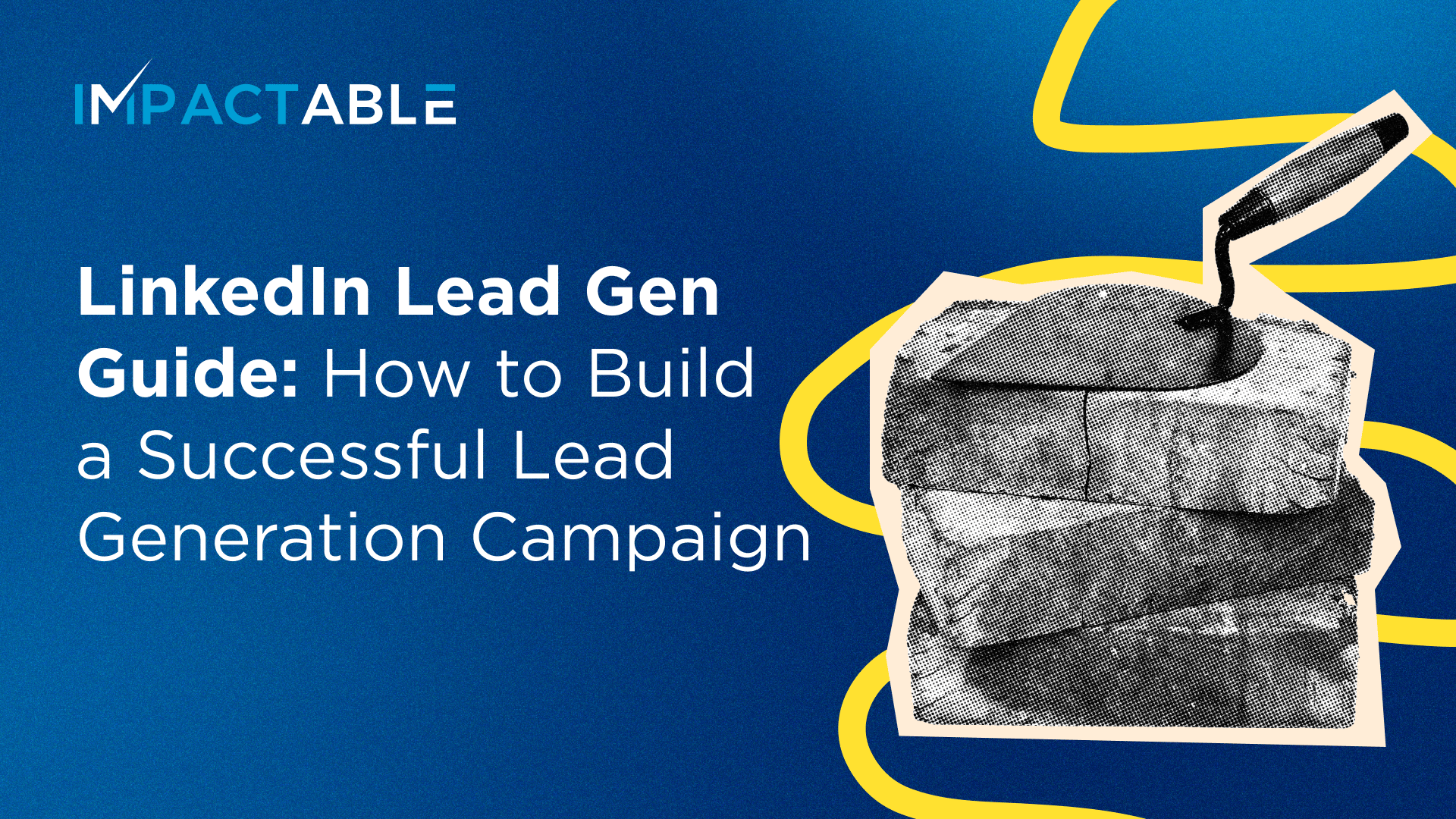LinkedIn is one of the best places a B2B marketer can use to generate demand for their brand. Its laser-focused targeting is unrivaled by other channels, and it’s why I’m a big advocate for the channel – and what Justin and the Impactable team do.
If you want to get the most out of your LinkedIn Ads, there are 3 key steps you need to take as a business.
A word of warning: this is some of the ‘simple’ but kinda hard stuff that so few businesses do. But once you do it, it’s like pouring rocket fuel on any ads that you run.
Table of contents
Step 1 – Deeply Understand the Customers You’re Targeting
One of the big mistakes we see B2B companies make is that they don’t deeply understand their target customers before they run LinkedIn Ads. As a result, they take a ‘spray and pray’ approach, hoping they’ll find messages and markets that fit together.
The reality is that every company is limited by budget and resource constraints. Combine that with the knowledge that the average B2B customer journey has 62.4 touches across 3.6 channels and involves 6.3 contacts over 192 days – and all of a sudden, we realize that if we go too wide with who our target customers are, we can’t go deep enough to earn the trust we need to.
So the first bit of hard work you need to do is to define a segment of the market that you want to generate demand from. The bigger this is, the bigger budget you’re going to need. But the more focused it is, the more you can tailor your messaging.
Segmenting The Market Helps You Get Attention
The more tailored our messaging is, the more likely it is that someone will pay attention.
It’s like if I’m at a family barbeque with 50 of my relatives at it, and someone shouts, “Hey Steven!” – there are 6 different Stevens that could turn around (I’m Greek – they’re all named after my Grandfather). More often than not, none of them turn around because they assume you’re trying to get the attention of the ‘other Steven’.
If you get a bit more specific and add a last name and shout: “Hey Steven Coudounaris!” – it’s still hard to get their attention because there are still 4 Stevens that share the same last name.
The only way I can guarantee that I will get the attention of the Steven I’m after is to follow “Hey Steven” with their middle name. That name is unique to them and guarantees they’ll register it’s relevant and turn around.
So, what does this have to do with running better LinkedIn Ads?
The more specific you are with who your target customers are, the more you can tailor your messaging. Some of our best-performing creatives when advertising our demand generation course is the creative that calls out our Ideal Customers in a very specific way:
B2B Marketing Managers + In a Small Team + Want to Build a Demand Gen Program
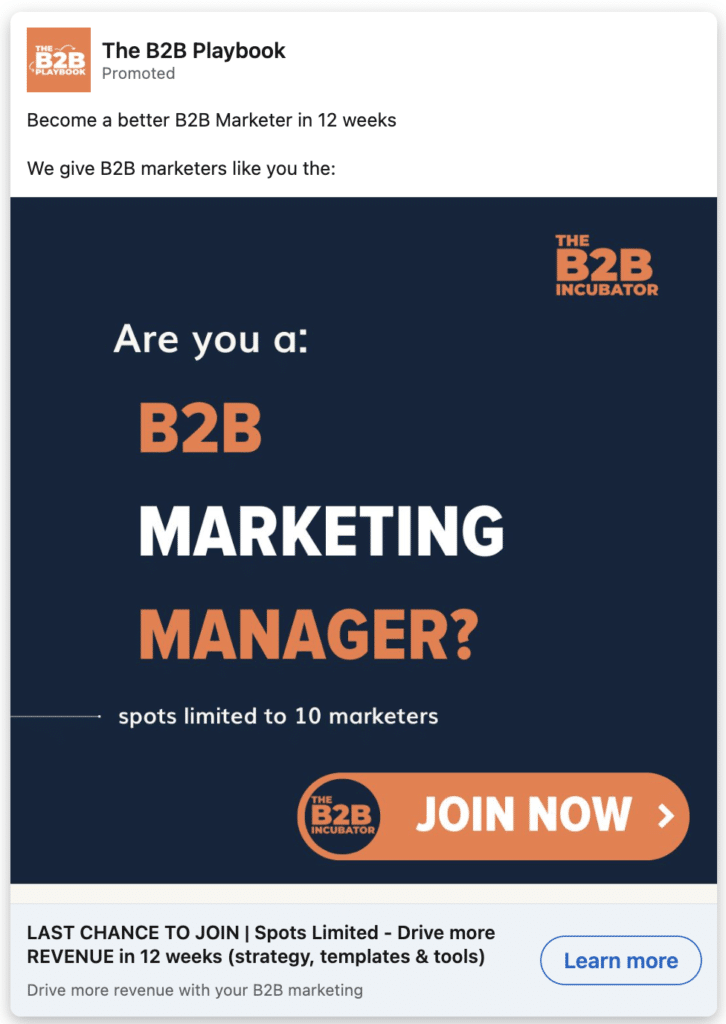
How To Segment Your Market
To decide what segment of the market you should target, you need to start with 80/20 analysis to identify who your best customers are.
If you work out which current customers fit your business like a glove first, you can then identify what your ideal future customers look like.
The next step is to then identify their firmographics and demographics, with the goal of being able to find common traits. Conducting customer interviews with them is the best way to then understand everything you need to know about them.
Things you should know include:
- What great pains do you help solve for them
- How does it help with their jobs to be done (JTBD)
- What does their buying journey look like
- Who is the buying committee made up of
- What sources of information do they trust
- Where do they hang out online and offline
This gives you the information that you need to understand why your best customers chose you over the competition. You should also understand what you had to say to them to turn them into a customer. This creates a roadmap of the typical buying journey for finding more customers just like your best ones.
Once you’ve identified who your best customers are, we normally recommend repositioning your brand to make it so obvious that you’re the ‘perfect fit’ for your future prospects in the segment that you’ve targeted. Then, update your messaging across all your assets to reflect this.
Justin and his team at Impactable have done this brilliantly for LinkedIn Ads. They perform several services other than LinkedIn Ads, but they’re the first company that comes to mind when you’re looking for LinkedIn Ads. This is because they’ve positioned themselves as the experts in this. It’s a masterclass in segmentation and positioning your business to get the most cut-through possible.
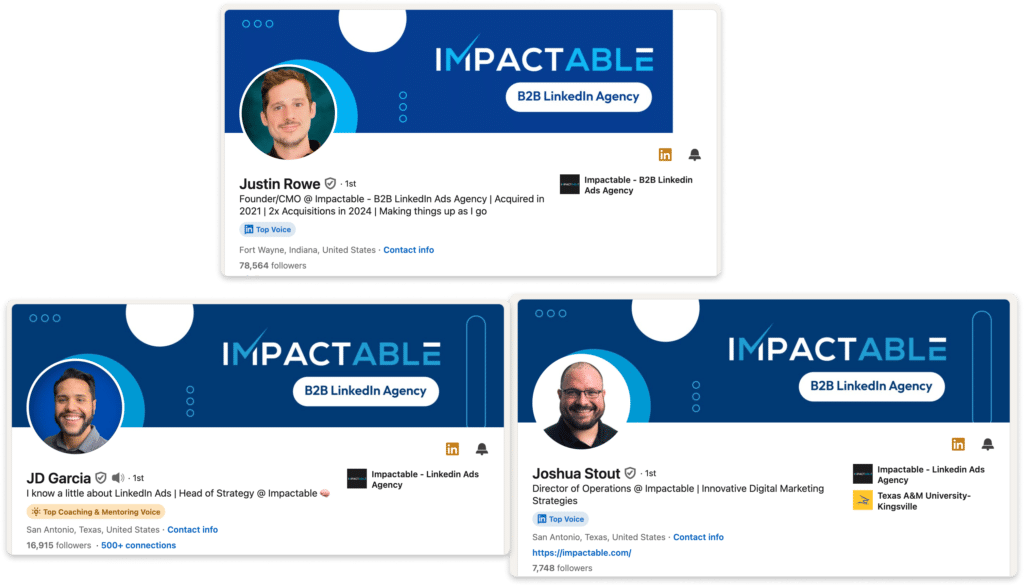
The comprehensive list of steps in Step 1 are:
- Conduct 80/20 analysis
- Interview Dream Customers
- Document Ideal Customer Profiles (ICP)
- Update your Positioning and Messaging
- Map the Buying Journey
- Create your Dream 100 sources of influence
Step 2 – Create Helpful Content to Build Relationships
Demand Generation is about:
- Getting your Ideal Customers to prioritize their problem in the way that you solve it, and
- Leading them to the logical conclusion you’re the perfect business to do it
Your ideal customers are only going to do this if they trust you first. One of the best ways to build trust is to create content that is incredibly helpful and helps the prospect even before they purchase your services.
We create helpful content on how to build a demand generation program and boost it on LinkedIn to our Ideal Customers. This is a great way to build trust with our cold audience, before then retargeting them with more product/service related information in our warm layer.
I see Justin and his team at Impactable do this regularly, boosting their most helpful content as Thought Leadership ads on LinkedIn.

What Content to Create to Build Relationships?
The content that you create should build trust with your Ideal Customers. One of my favorite frameworks for mapping the content you create to the buying journey is called ‘The 5 Stages of Awareness’. It takes a prospect from being ‘unaware’ that they even need your product or service, to being led to the logical conclusion that you’re the perfect fit for them.
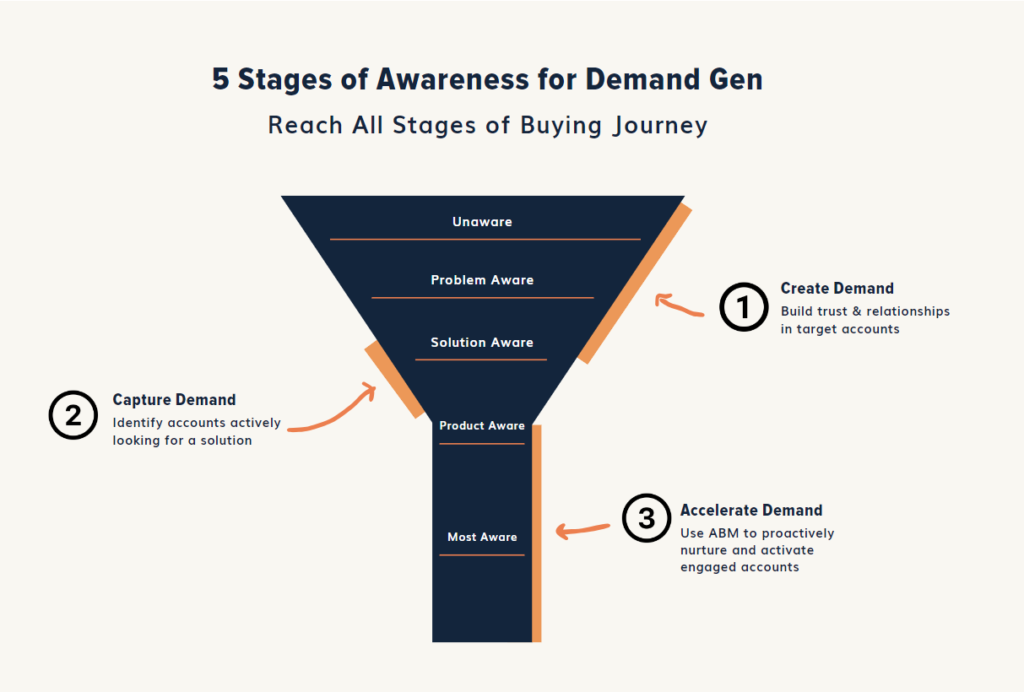
Your job is to create content that hits every stage of awareness. This should answer questions that they have at each stage, and help them to progress to the next in their buying journey.
You get big bonus points if you create this content in partnership with Subject Matter Experts. There’s a reason that Justin features in all of Impactable’s own creative – he is the expert!
If he’d just got a freelancer to create the content without real industry or technical expertise, there’s no way the content or ads would have had the same impact.
The complete list of steps in Step 2 are:
- Understand how to help your ICP
- Create helpful content that educates and entertains
- Map your content to the 5 Stages of Awareness framework
- Use Subject Matter Experts to create pillar content with on a regular schedule
Step 3 – Repurpose Your Content and Iterate
Now you’ve got great pillar pieces of content with your Subject Matter Experts, you need to put together a process for repurposing it. Repurposing content means taking a long form piece of content (like a podcast, youtube video, article, whitepaper etc.), and chopping it up into bite sized pieces to use across different channels. This enables you and the team to create really useful and relevant content with the fewest resources possible.
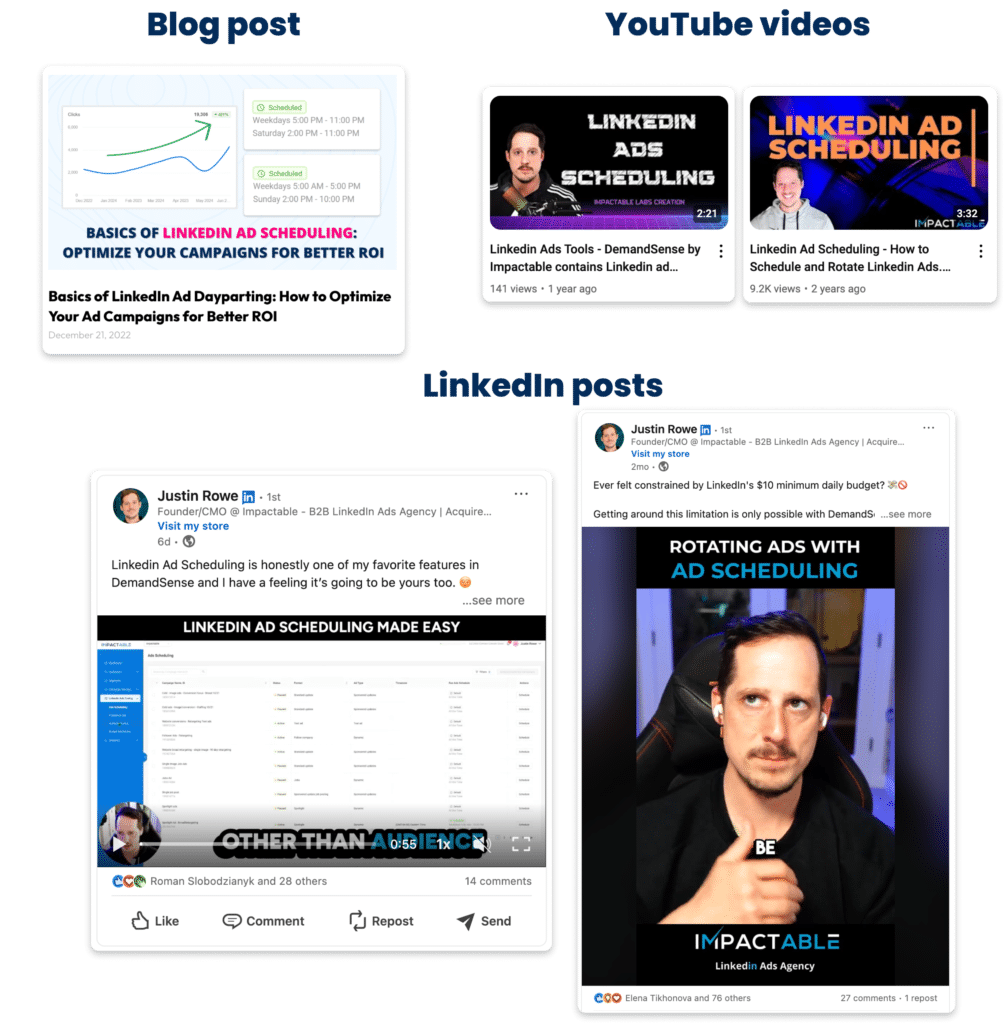
It’s how every week we’re able to generate in 5 hours:
- 1x 40 minute podcast
- 1x 40 minute youtube video
- 1x in-depth article
- 1x newsletter
- 12x LinkedIn posts
- 8-10x YouTube shorts
This will create content that is incredible for relationship building. Combine this with LinkedIn Ads that boost it to your Ideal Customers, and you’ll generate far more demand than you were before.
You will also get great quantitative and qualitative feedback on this content, particularly when distributed on social channels like LinkedIn. This gives you the opportunity to understand what is and isn’t working, and adjust the angle of your content accordingly.
The complete list of steps in Step 3 are:
- Repurpose this content to multiple channels for ease of consumption for your ICP
- Distribute your helpful content wherever it is your ICP is present
- Scale your content production
- Improve with quantitative and qualitative data
Final Words of Advice
The work that I’ve detailed above takes time, but will make an enormous difference to the impact of your LinkedIn Ads (and other advertising generally). Whether you’re running LinkedIn Ads internally, or are using an agency partner like Impactable, you need to do it.
Remember: every company is limited by budget, resources, and time. This will help you use it in the most efficient way possible, to generate more demand for your business.
 Written by George Coudounaris
Written by George Coudounaris

